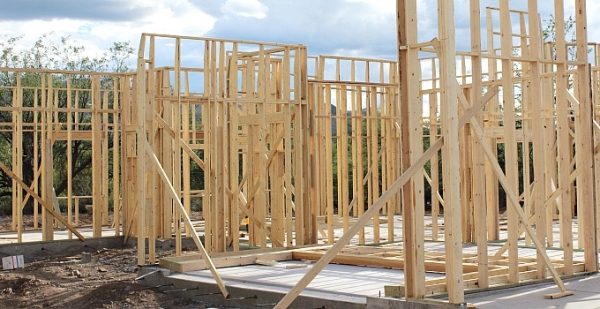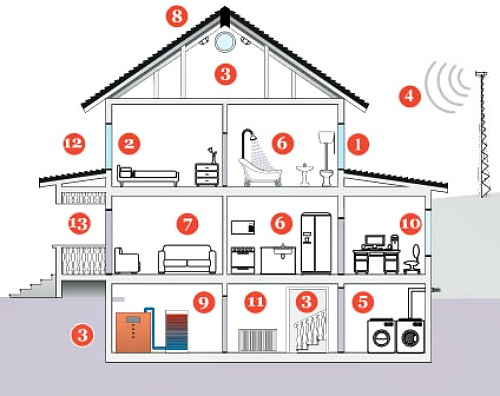As a certified Building Biology Practitioner, momsAWARE founder Andrea Fabry is often asked, "What is Building Biology?" The answer is simple, but often ignored when designing our homes, offices, and schools.

Building Biology is the study of the impact of the indoor environment on our health. Building Biology comes from the German term Bau-Biologie (bau meaning building and the living environment, bios meaning all forms of life, and logos implying a sense of order).
There is no question that buildings have an impact on those who occupy them. The average person spends 90 percent of their time indoors. This is in stark contrast to most of human history, when mankind spent significant time outdoors. The World Health Organization meanwhile continues to sound the alarm when it comes to the rise of chronic diseases (see this WHO fact sheet).
Building Biology in the United States was founded by Helmut Ziehe, a seasoned German architect who was working in North Africa in 1980. Ziehe helped design government homes made of concrete. Most of the city's 90,000 inhabitants abandoned the homes, choosing to live in tents instead. Ziehe realized that health must be the primary concern in building design, eventually relocating to Florida where he founded the International Institute for Bau-Biologie & Ecology (IBE) in 1987.
Building Biology acknowledges that a sick building can diminish our life while a health-supporting building can enhance it, emphasizing the use of natural building materials as opposed to those that are synthetic and unnatural.
25 Building Biology Principles
The following principles offer a comprehensive checklist when it comes to safe, healthy building construction. While all 25 principles are difficult to achieve, this list shows how far we have strayed from natural building practices.
Site and Community Design
- Verify that the site is free of naturally occurring health hazards.
- Place dwellings so occupants are undisturbed by sources of man-made air, soil, water, noise, and electro-pollution.
- Place dwellings in well-planned communities that provide ample access to fresh air, sunshine, and nature.
- Plan homes and developments considering the needs of community, families, and individuals of all ages.
Occupant Health and Well-Being
- Use natural and unadulterated building materials.
- Allow natural self-regulation of indoor air humidity using hygroscopic (humidity buffering) building materials.
- Assure low total moisture content and rapid desiccation of wet construction processes in new buildings.
- Design for a climatically appropriate balance between thermal insulation and thermal storage capacity.
- Plan for climatically appropriate surface and air temperature.
- Provide for ample ventilation.
- Use appropriate thermal radiation strategies for heating buildings, including passive solar wherever viable.
- Provide an abundance of well-balanced natural light and illumination while using color in accordance with nature.
- Provide adequate acoustical protection from harmful noise and vibration.
- Utilize non-toxic building materials that have neutral or pleasant natural scents.
- Use appropriate water and moisture exclusion techniques to prevent interior growth of fungi, bacteria, dust, and allergens.
- Assure best possible potable water quality by applying purification technologies if required.
- Utilize physiological and ergonomic knowledge in interior and furniture design.
- Consider proportion, harmonic measure, order, and shape in design.
Natural and Man-Made Electro-Magnetic Radiation Safety
- Minimize indoor interference with vital cosmic and terrestrial radiation.
- Minimize man-made power system and radio frequency radiation exposure generated from within the building and from outside sources.
- Avoid use of building materials that have elevated radioactivity levels.
Environmental Protection, Social Responsibility, and Energy Efficiency
- Construction materials and production and building processes shall provide for health and social well-being in every phase of the building's life-cycle.
- Avoid the use of building materials that deplete irreplaceable natural resources or are being harvested in an unsustainable manner.
- Minimize energy consumption throughout the life of the building utilizing climate-based and energy-efficient design, energy- and water-saving technologies, and renewable energy.
- Consider the embodied energy and environmental life-cycle costs when choosing all materials used in construction.
For a printable copy of this list, download IBE's 25 Principles of Building Biology.
While the medical industry continues to look for cures for chronic disease, Building Biology seeks to prevent disease by helping consumers make informed choices when it comes to their indoor environments. According to Building Biology, nature is the ultimate guide.
Would you like to learn more about Building Biology? You'll find fact sheets for each of the following on the home page of the International Institute for Building-Biology & Ecology.
- Ample Natural Ventilation
- Healthy Sleeping Sanctuary
- Free-Flow Cosmic/Terrestrial Radiation
- EMR Safety from Outside Sources
- Healthy Cleaning Products
- Drinking Water Purity
- Health-Supporting Color Scheme
- Non-Toxic Natural Finishes Throughout
- Eliminate Toxic Combustion By-Products
- EMR Safety In-house
- Healthy Radiant Heating
- Acoustic Protection in Walls & Windows
- Flow-Through Walls & Moisture Control
Image courtesy of the International Institute of Building-Biology & Ecology
The International Institute for Building-Biology & Ecology offers online courses, certification programs, and useful publications. With the work of IBE and and an educated public, we may soon see major changes in the way we construct and maintain our homes, offices, and schools.
